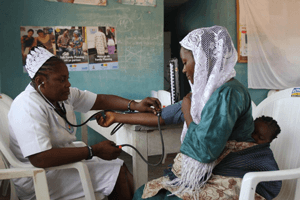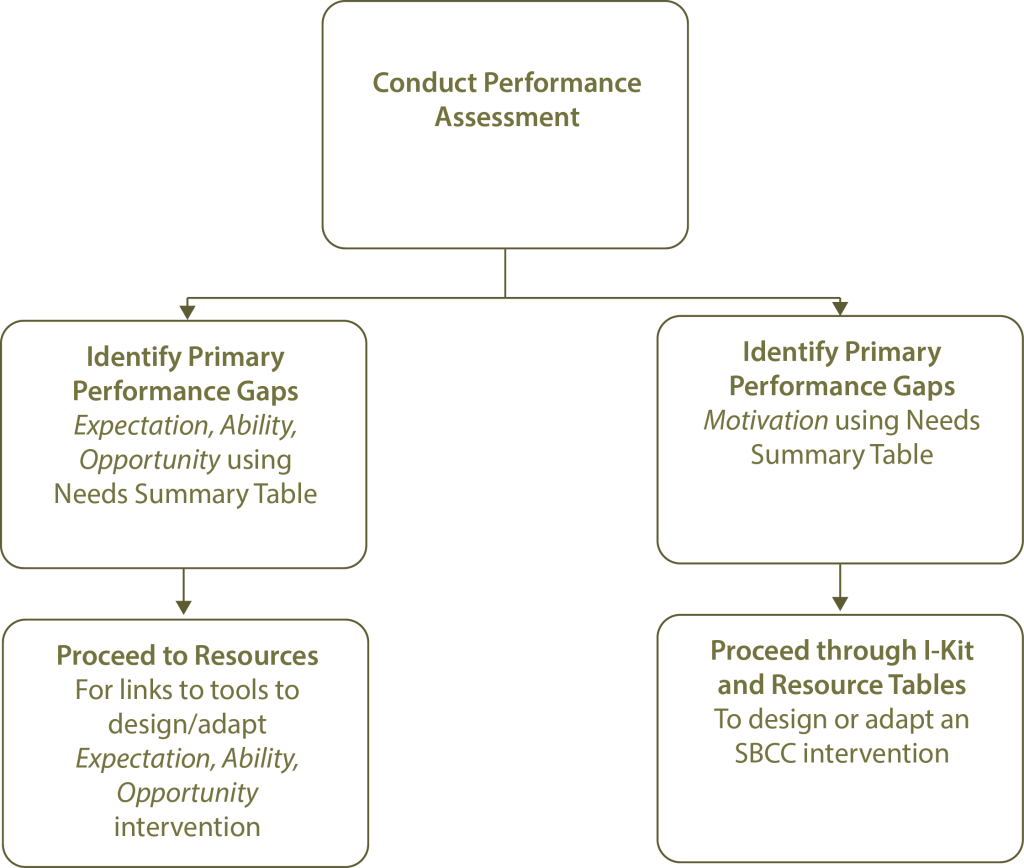A situation analysis is the first step in the social and behavior change communication change (SBCC) process including one that focuses on FBPs. The situation analysis answers questions about existing opportunities, resources, challenges and barriers related to improved FBP behavior.
You can conduct this step using one of the following two options:
Conduct FBP Assessment
Follow the steps in the Provider Performance Assessment tool (preferred).
Gather Secondary Data
Gather the information you need for the Situation Analysis through secondary data.
Whichever method you use, make sure you answer these fundamental questions:
- What is the performance problem, the level of severity and its causes frame around Expectation, Ability, Opportunity and Motivation?
- Who are the groups of people affected by the problem (what types of providers, what motivations do they possess, where do they live and work, what are the psychographic details, etc.)?
- What is the broad context in which the problem exists?
- What are the factors inhibiting or facilitating behavior change among FBPs?
- What other interventions are in place or planned to address FBP behaviors?
- What are FBPs’ preferred sources of information and communication channels?
The following summarizes the key activities for the situation analysis:
 1 Conduct a Review of Program Data
1 Conduct a Review of Program Data
This includes service records, quarterly reports, policy documents and informal interview. Then develop a focused problem statement. This statement will help to ensure the intervention focuses on one specific behavioral issue at once. Example: “Facility-based providers do not treat clients with respect and kindness.”
2 Draft a Shared Vision
A shared vision provides a picture of what the situation will look like when the SBCC effort is completely successful. Example: “In 2025, every employee at the health center treats clients with respect and kindness, regardless of the clients’ background, behaviors, appearance, or current situation. Health center employees treat each client like they would a family member.” Guidelines on what to consider when drafting this vision.
3 Gather Information and Summarize Findings
If you chose to conduct the FBP Performance Assessment, follow the steps to gather the information and summarize your findings through the link. If you chose to conduct a literature review, follow the steps in this how-to guide for conducting a Situation Analysis using secondary data to answer the key questions about FBPs and their work environment.
Examples of secondary data you might consider to gather this information include:
- FBP monitoring or support supervision reports
- Service delivery statistics
- Program reports
- Key informant interviews
- Government, partner and donor activity evaluation reports
- Government policy documents regulating FBPs and primary health services
Whether you use the FBP Performance Assessment or a Literature Review to conduct the assessment, the findings of your situation analysis should be framed around the four categories of FBP performance:
- Expectation – Do FBPs understand the performance expected and the definition of quality?
- Opportunity – Do FBPs have the environment and necessary resources available to support performance?
- Ability – Do FBPs have the skills and knowledge necessary to do the tasks in his/her scope of work and feel competent in doing so?
- Motivation – Is there sufficient reward and lack of negative consequences to make FBPs want to do his/her job?
Use this Needs Summary Table from the FBP Performance Assessment to summarize the findings. Then prioritize those needs using the Prioritization Matrix and Action Tracker.
If you prioritized Expectation, Opportunity or Ability barriers, proceed to Other Resources for tools, resources and programmatic examples to improve Expectation, Opportunity and Ability performance gaps.
If you prioritized Motivation barriers, identify which motivational barriers are relevant to your FBPs and then proceed through the I-Kit to design your intervention.
The graphic below describes how to navigate the results of the Assessment or literature review to use this I-Kit.
4 Review the Data
Review the data you collected through the FBP Performance Assessment or Literature Review. Study the five categories of factors impacting FBP motivation in the Learn section. Determine which motivational factors are most relevant to the FBPs you are working with.
Situation Analysis Outputs
At the end of the situation analysis, you should have:
- Problem Statement
- Shared Vision Statement
- Analysis Findings
Record these outputs in the Step 1 section of the SBCC Strategy Template.



No Comments